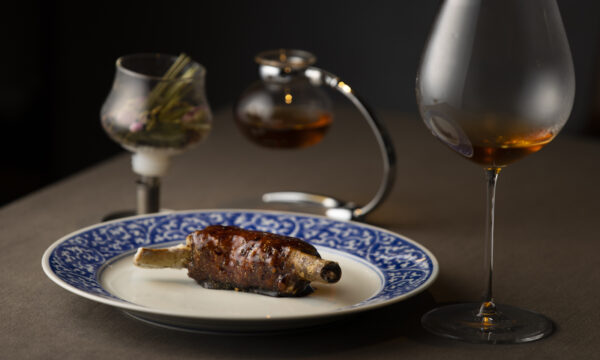
The vital power of tea, and Chinese restaurant Sazenka’s simple yet profound tea pairings (2nd half)
2020.04.03 Tea and FoodINTERVIEW
- Red Tea
- Taiwanese Tea
- Tokyo
There is an idiomatic phrase in Japanese known as “wakon kansai,” which refers to the harmonious combination of traditional Chinese learning with the distinctive Japanese spirit. This phrase encapsulates the philosophy at the heart of the Chinese restaurant Sazenka, located in Tokyo’s Minami-Azabu district, and applies perfectly to its head chef, Tomoya Kawata. The restaurant makes brilliant use of Chinese culinary techniques to draw out the flavors inherent in Japanese-sourced ingredients. Having begun his career at Azabu’s legendary Chinese restaurant Azabu Choko, where he rose to the position of sous-chef, Kawata then turned his attention to attaining mastery of Japanese cuisine at Nihonryori Ryugin. He is now dedicated to producing a uniquely Japanese take on Chinese cuisine.
Since its opening in 2017, Sazenka has been committed to creating beautiful dishes based on a unique worldview, coupled with the highest levels of customer service. Famed now as a top-class restaurant patronized by true connoisseurs, it has also drawn significant popularity for its tea pairings.
“It’s almost the extension of a hobby for me,” explains Kawata. “As I am not a big alcohol drinker, I wanted to find a non-alcoholic beverage that could be paired with various dishes to ensure that all my customers could be satisfied. While most of the beverages I pair with my dishes are Chinese teas, I also use a smaller number of Japanese teas. I offer a total of eight to ten different varieties, brewed using a wide range of different methods and at different temperatures. What really pleases me is when even those customers who usually order alcoholic drinks to accompany their meals decide to opt for one of my tea pairings instead.”
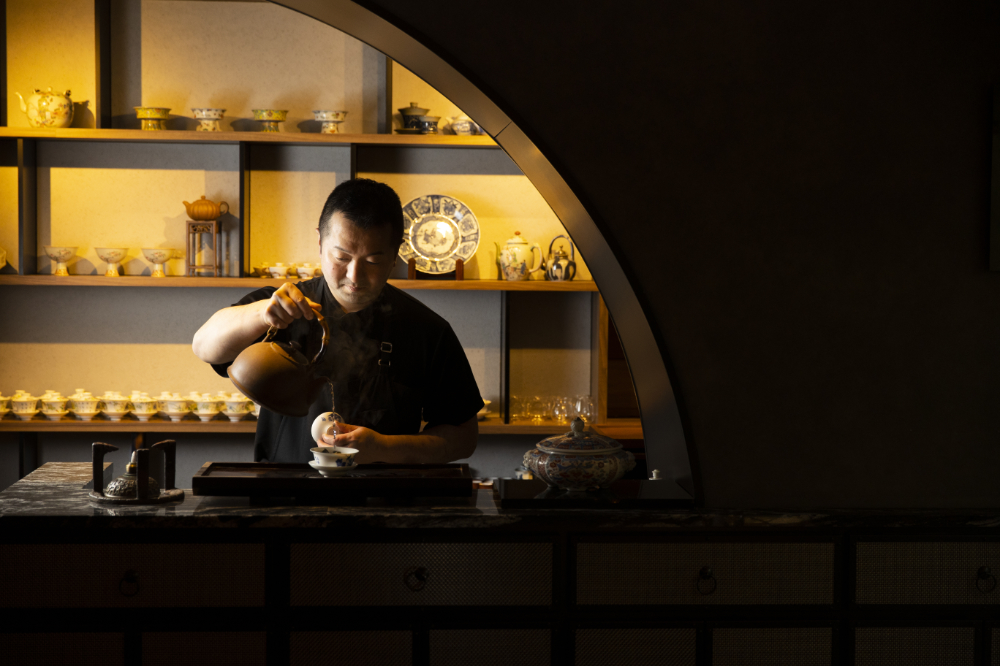
Kawata’s eyes were opened to the possibilities inherent in tea at the age of 20 when he was working at Azabu Choko following his graduation from culinary school. Still a novice, he was not capable of making much of a contribution in the kitchen and was told by the head chef that the least he could do would be to learn how to brew a good pot of tea to serve to the customers at the end of their meal.
“To learn how to do that, I visited a number of Chinese tea shops and discovered just how delicious tea can be. I’ve been hooked ever since,” he admits.
Later, in his mid-20s, Kawata fell ill from overwork and found himself unable to eat anything.
“Even then, though, I could drink tea. I could still appreciate its taste, and it still brought succor to my body. Really, tea saved my life. The reason the name of my restaurant, Sazenka, incorporates the kanji for ‘tea’ at the beginning of its name is because tea is just that important to me.”
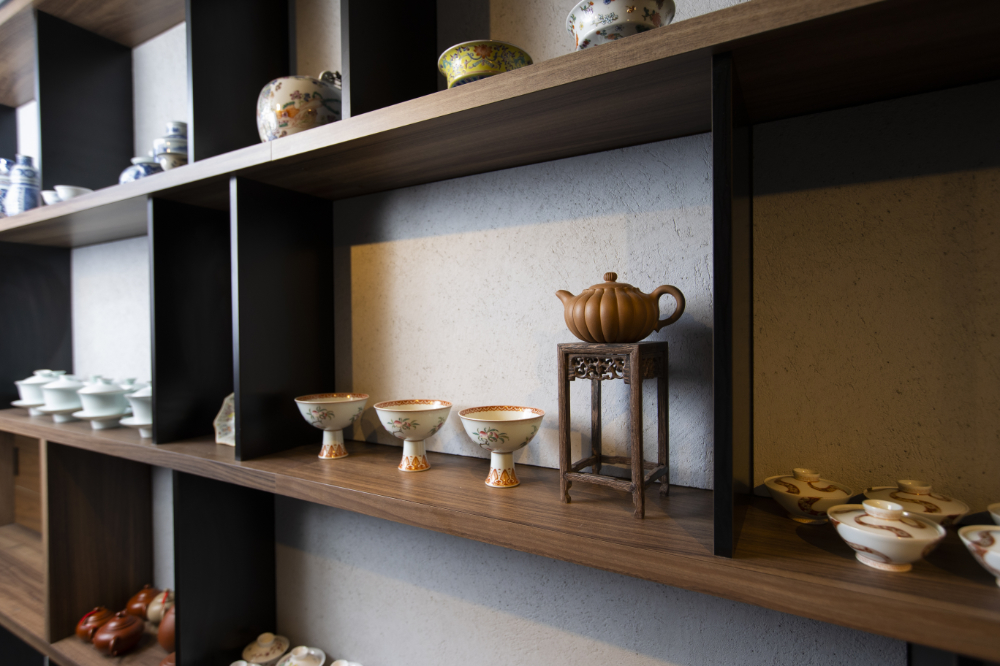
I ask Kawata to explain his mindset in forming pairings between his cuisine and certain teas, using concrete examples to demonstrate his points.
While eight to ten varieties of tea are provided to pair with the various dishes served at Sazenka, just two or three of these are Japanese teas. “I intentionally keep the number of Japanese teas to a minimum,” explains Kawata.
By restricting the number of Japanese teas he serves, he can create a taste contrast that heightens the impact of Japanese teas. “The umami in Japanese tea is an element not found in Chinese tea,” he expounds. “Chinese tea has a flavor structure featuring a clean, fresh taste, with depth that expands on the palate. On the other hand, Japanese tea features a sweetness which suffuses the mouth, which is why I can sometimes use it in the same way I would use seasonings.”
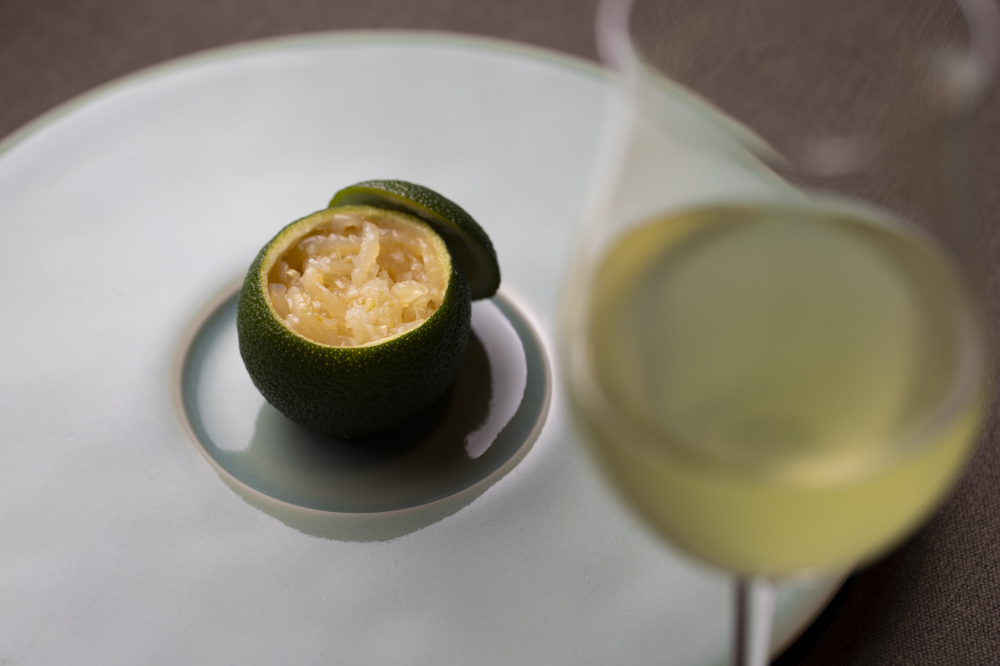
The pulp of a sudachi citrus has been carved out, and the empty peel is stuffed with dressed jellyfish. The juice from the pulp still remaining in the “lid” of the sudachi is then gently squeezed on top. The sweet and sour flavors and light and playful texture of the jellyfish match perfectly with the sweet taste and smooth throat finish of the gyokuro. The notes of dried seaweed in the tea also serve to complement the jellyfish’s flavors.
“I tend to brew Japanese green tea at lower temperatures,” admits Kawata. “In this case, I have used 14 grams of tea leaves in 800 milliliters of water and essentially ice-brewed it in a freezer for 48 hours. I suppose I have used slightly more tea leaves than usual. But by brewing it at that low temperature, it maintains its smooth mouth-feel and adds a longer, dashi-like aftertaste.”
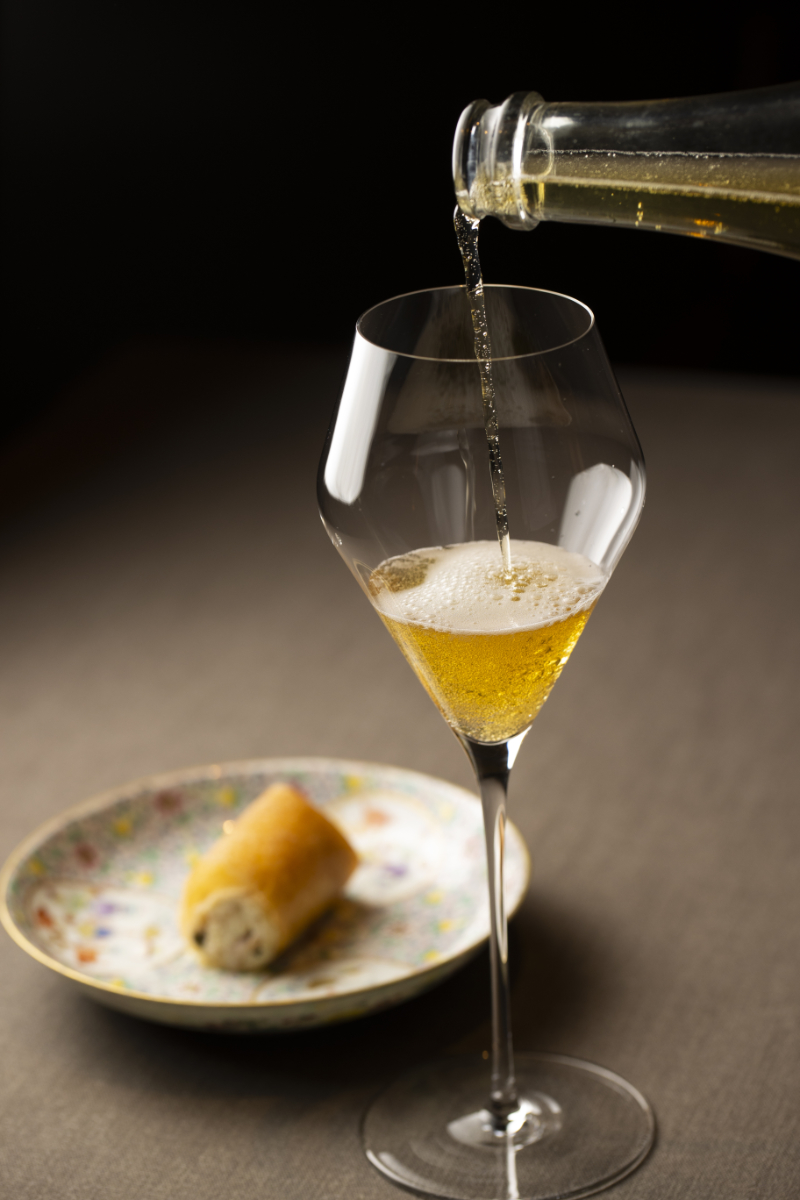
Sazenka’s legendary seasonal spring rolls are a delicacy that every regular diner looks forward to with great anticipation. Each contains seasonal seafood (such as sweetfish in summer, saury in autumn, and crab in winter) encased in a crispy deep-fried shell, guaranteeing sheer bliss the moment the diner takes that first bite.
This time, Kawata has prepared a creation heralding the arrival of spring. The soft, succulent minced fish has been created using Japanese culinary techniques. The bitterness of the butterbur sprouts is the final flavor to arrive on the palate, emerging like the sprouts themselves from the snow-covered ground.
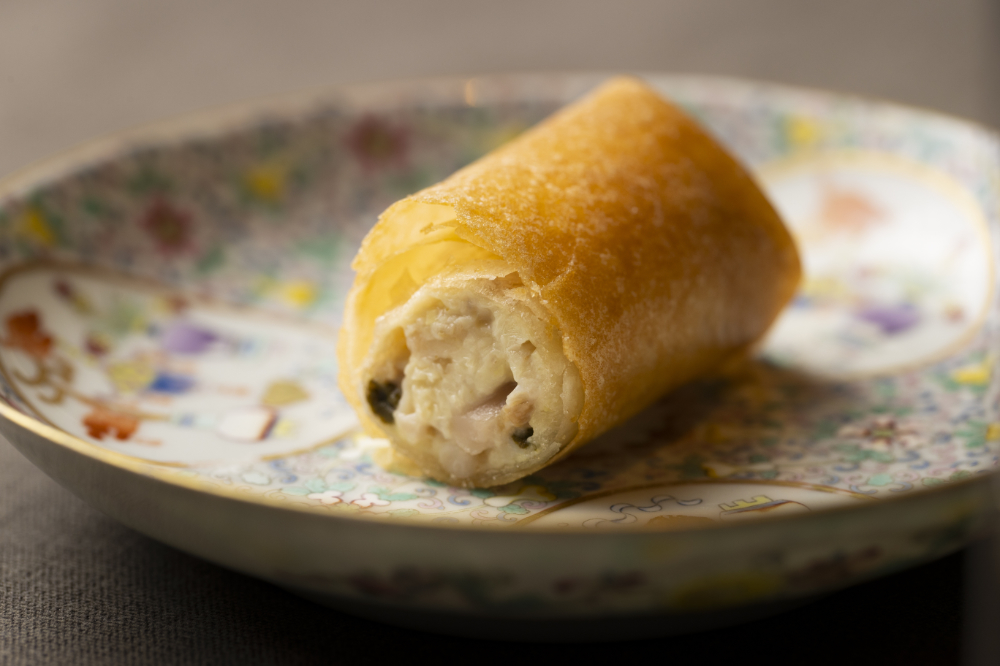
Kawata has paired this delicacy with Dongfang Meiren tea. After being slowly brewed for 30 minutes in lukewarm, 48-degree water, it has then been chilled with ice for 40 hours before being mixed with carbonated water just before serving for a sparkling finish. Famous for its fruity, nectar-like aroma, the addition of carbonation transforms Dongfang Meiren into something akin to high-end champagne. Adding depth to the lightness of the minced fish and the umami of the clams, it gently washes the palate clean from the aroma of the butterbur sprouts.
Kawata’s tea pairings are like the conducting of an orchestra. Each individual part, already crafted to the highest possible level, opens up almost infinite possibilities upon its combination with the other. In the second half of this article, I showcase more of his pairings while discussing with Kawata the culinary philosophy underpinning them.
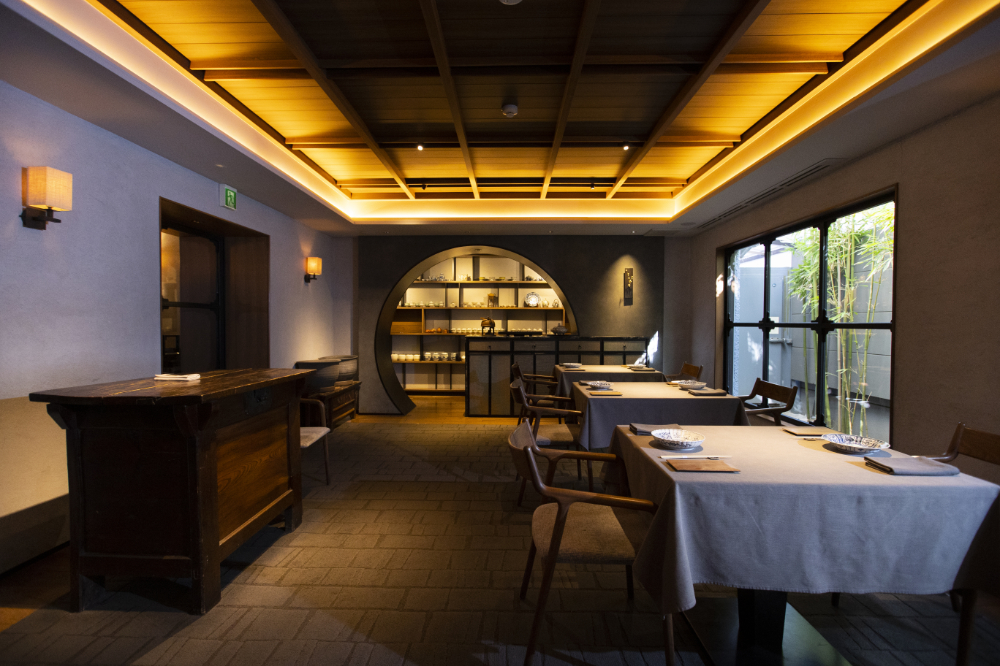
Sazenka
A unique Chinese restaurant embracing the concept of “wakon kansai,” the marriage of Japanese spirit and Chinese scholarship. Since its opening in 2017, its creative cuisine and warm hospitality have made it a firm favorite among connoisseurs. Its classic yet adventurous dishes combine simplicity with a wonderful depth of flavor.
Seasonal Chef’s Course (15 dishes): From ¥23,000
Tea Pairings (app. 8 types): From ¥8,000
Photo: Masaharu Hatta
Text: Reiko Kakimoto
Edit: Yoshiki Tatezaki
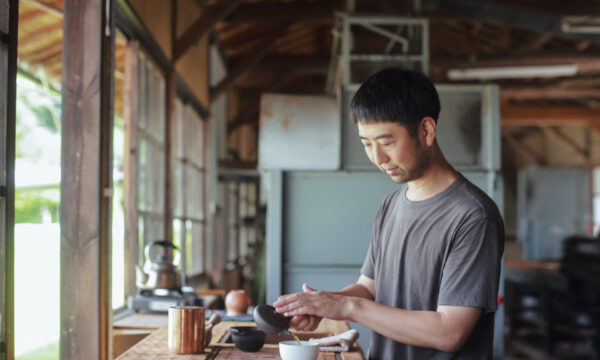
2024.09.20 Tea CraftsmenINTERVIEW
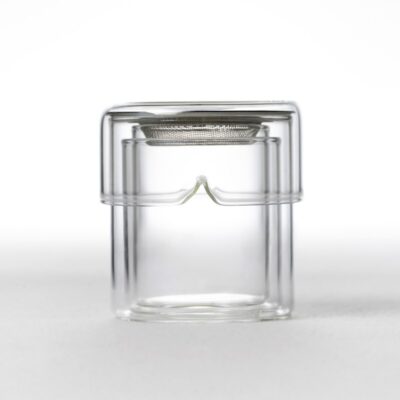
内容:フルセット(グラス3種、急須、茶漉し)
タイプ:茶器
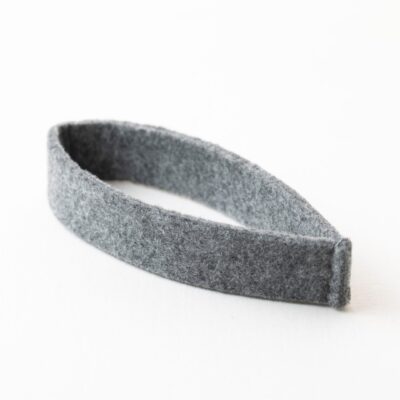
内容:スリーブ×1種(素材 ポリエステル 100%)
タイプ:カスタムツール